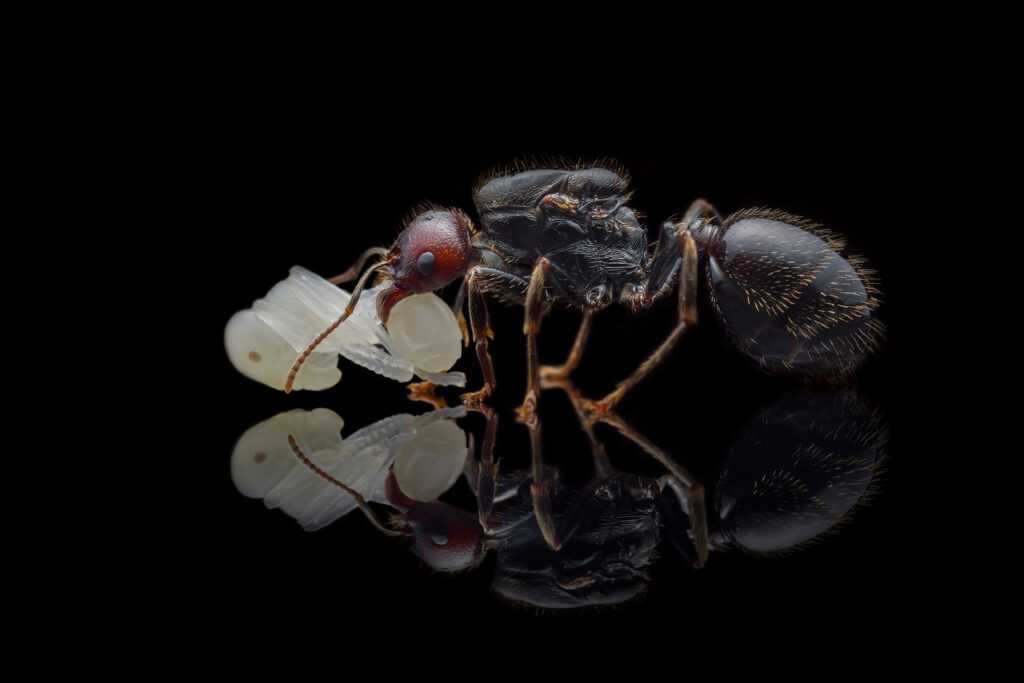Ponera coarctata: A Fascinating Ant Species
Are you fascinated by unique species and their intriguing behavior? If so, let us introduce you to Ponera coarctata, a remarkable ant species that will captivate your attention. In this article, we will explore various aspects of the Ponera coarctata, including its colony type, size, development speed, nutrition, habitat requirements, and other interesting features. Whether you are an ant enthusiast or simply curious about the wonders of nature, read on to discover the fascinating world of Ponera coarctata.
Colony Type and Size
Ponera coarctata is a polygynous ant species, meaning that it has multiple queens within a single colony. This unique colony structure allows for increased reproductive potential and resilience. The colony size can range from a few dozen individuals to up to 100 workers. The presence of multiple queens ensures the stability and growth of the colony, contributing to its overall success.
Size and Color
The Ponera coarctata exhibits distinct size variations among its castes. The queen, the largest member of the colony, measures between 4-6mm in length. On the other hand, the workers, who make up the majority of the colony, have a size range of 2.3-3.5mm. Both the queen and the workers have a striking black coloration, adding to their allure and mystique.
Development Speed
The development speed of Ponera coarctata can be described as slow. The ant larvae undergo a gradual metamorphosis process, which includes the egg, larva, pupa, and adult stages. This deliberate and meticulous development allows for careful care and attention from the workers and queens, ensuring the well-being and success of each individual within the colony.
Nutrition
In the wild, Ponera coarctata sustains itself through a diverse diet. Their primary food sources include food insects like cockroaches and crickets. They also consume various food items such as syrup (a mixture of water and honey), fruits, vegetables, jelly, and even cooked chicken without salt. This varied diet ensures that the ants receive a balanced nutritional intake, promoting their overall health and vitality.
Habitat Requirements
Ponera coarctata is known to build its nests on trees and other plants. These nests are primarily constructed by the larvae, showcasing the incredible cooperative abilities within the colony. When provided with artificial nests for breeding, these ants thrive in small soil insects such as plaster and aerated concrete. These materials mimic their natural habitat and provide the ideal conditions for the ants to reproduce and establish a successful colony.
Humidity and Temperature
Proper humidity levels are crucial for the well-being of Ponera coarctata. In the nest area, a humidity range of 70-90% is recommended. In the arena (the foraging area), a slightly lower humidity of 50-70% is preferred. Maintaining these ideal humidity levels ensures that the ants can thrive and carry out their tasks effectively.
When it comes to temperature, Ponera coarctata has specific requirements for different areas of their habitat. In the arena, a temperature range of 26-30°C is optimal. This temperature range encourages the ants’ active behavior and foraging activities. In the nest area, a slightly lower temperature range of 22-30°C is recommended. These temperature conditions resemble the ants’ natural environment and promote their overall well-being and productivity.
Features of the Species
Ponera coarctata is not only known for its unique nesting behavior and dietary preferences but also for its aggression and activity level. These ants display a high level of aggressiveness when defending their nest or foraging territory. Their small size should not be underestimated, as they compensate for it with their fierce and combative nature. In addition, Ponera coarctata ants are highly active, constantly on the move in search of food and resources to sustain their colony.
Conclusion
Ponera coarctata is undoubtedly a captivating ant species with its polygynous colony structure, diverse diet, complex nesting behavior, and robust temperament. Observing these ants in their natural habitats or maintaining them in artificial setups can provide a fascinating glimpse into the intricate workings of the natural world. By understanding and appreciating the unique characteristics of this species, we can cultivate a deeper admiration for the diverse array of life forms that coexist with us on this planet.


















Reviews
There are no reviews yet.